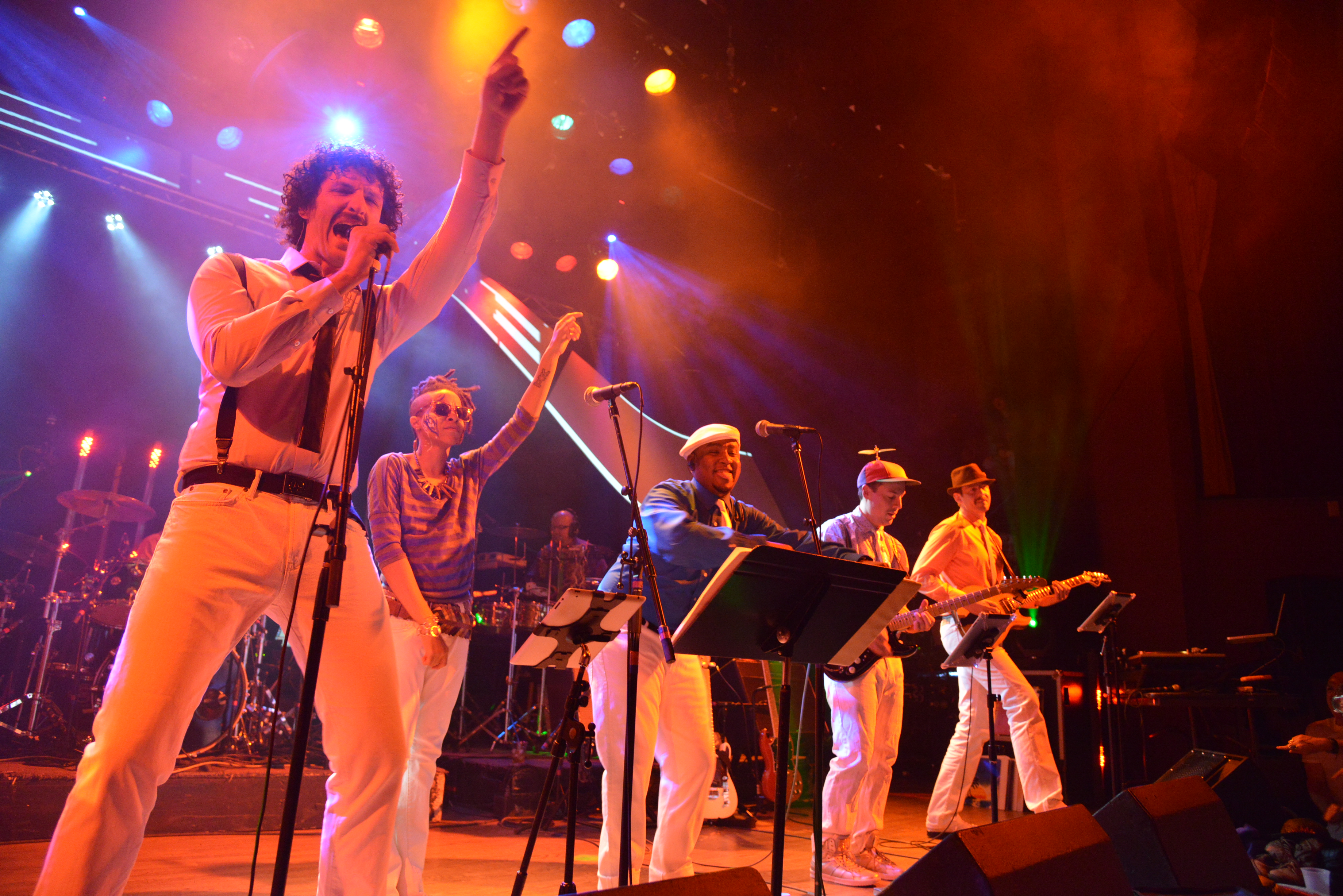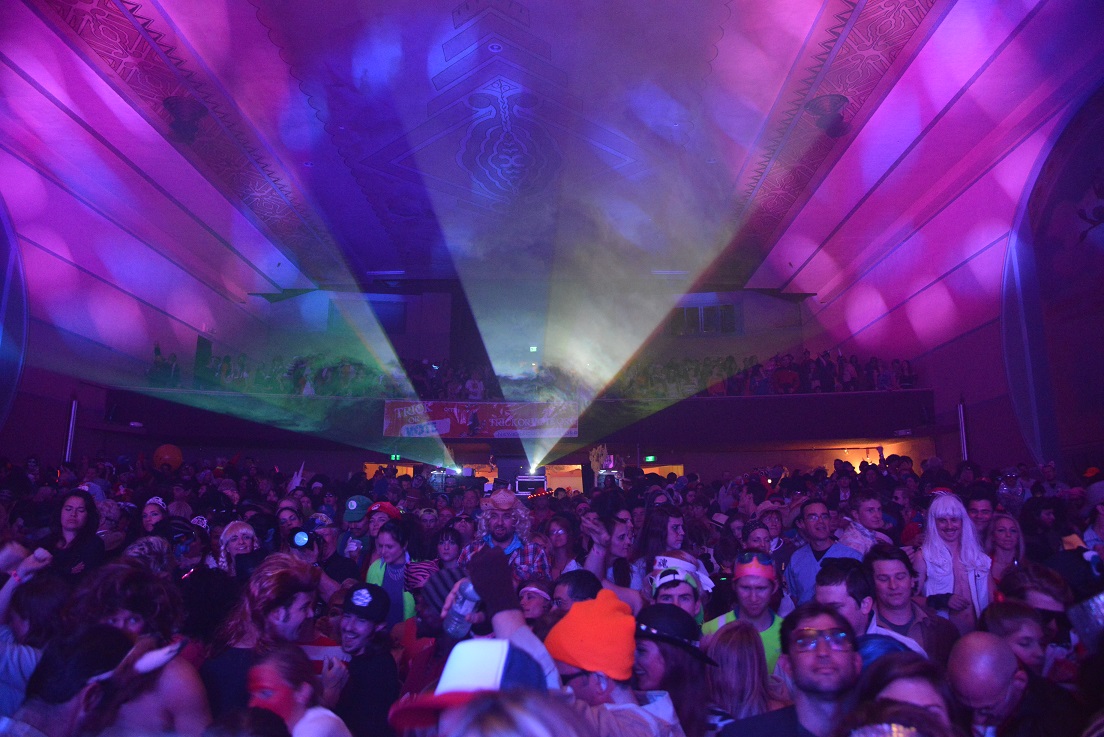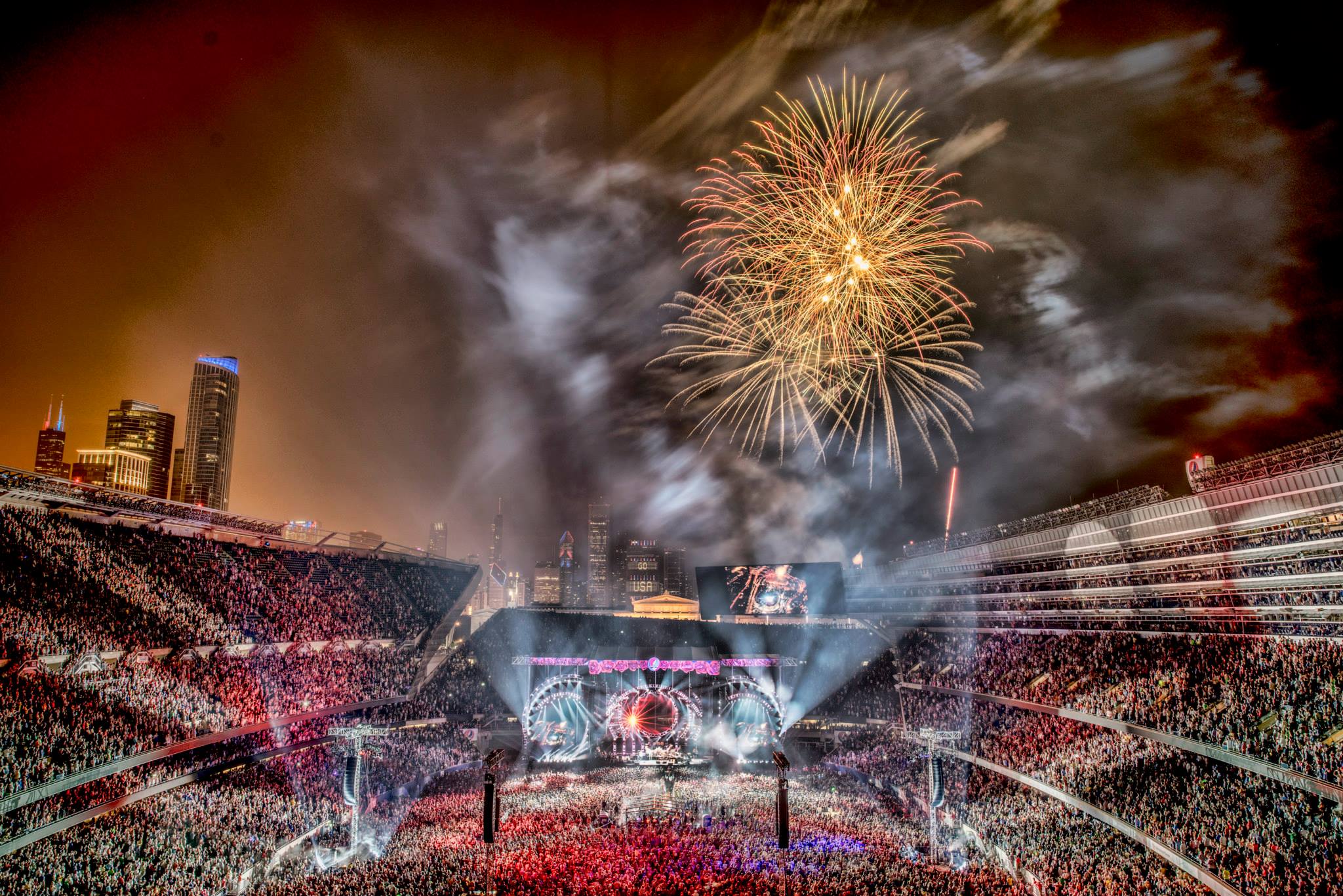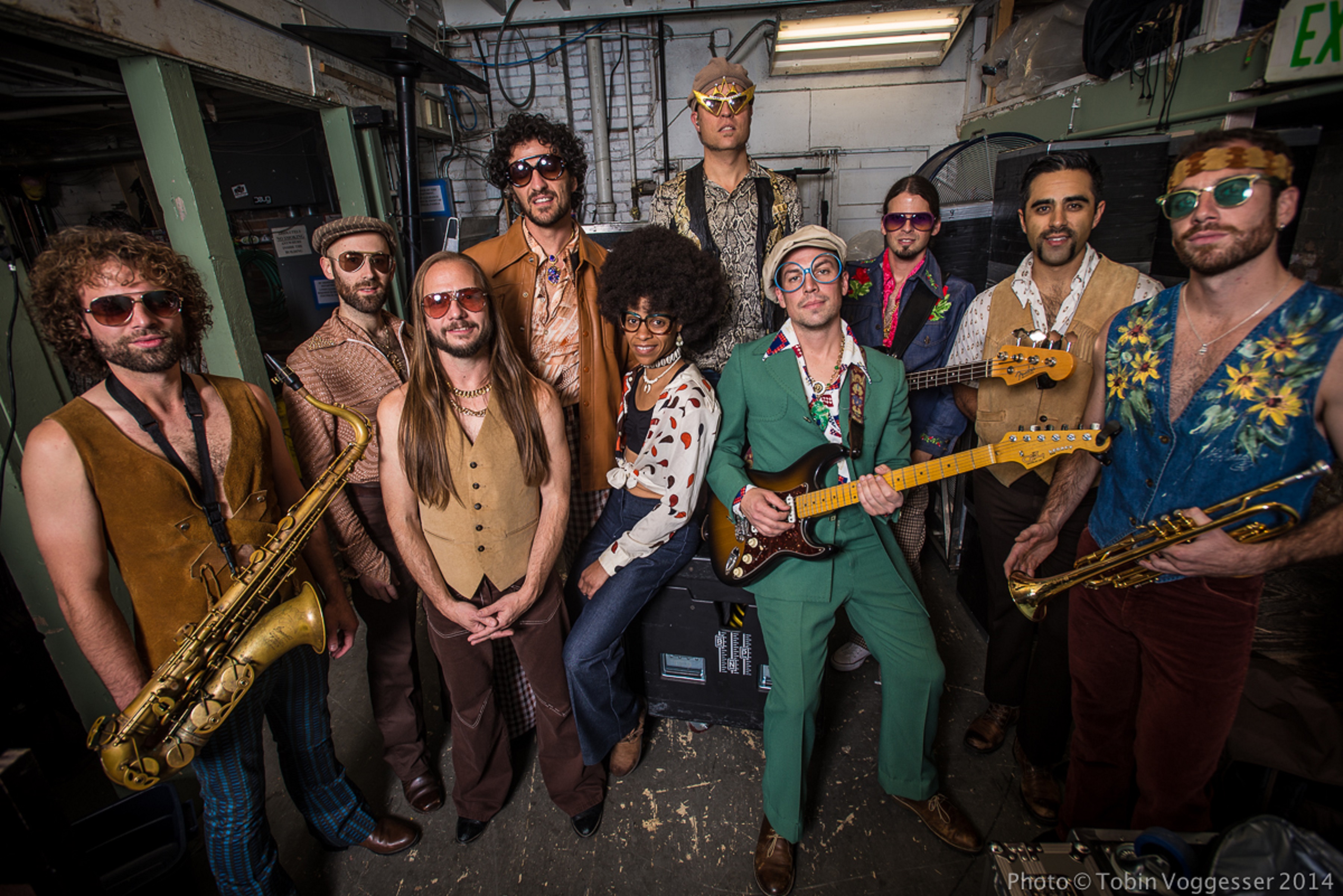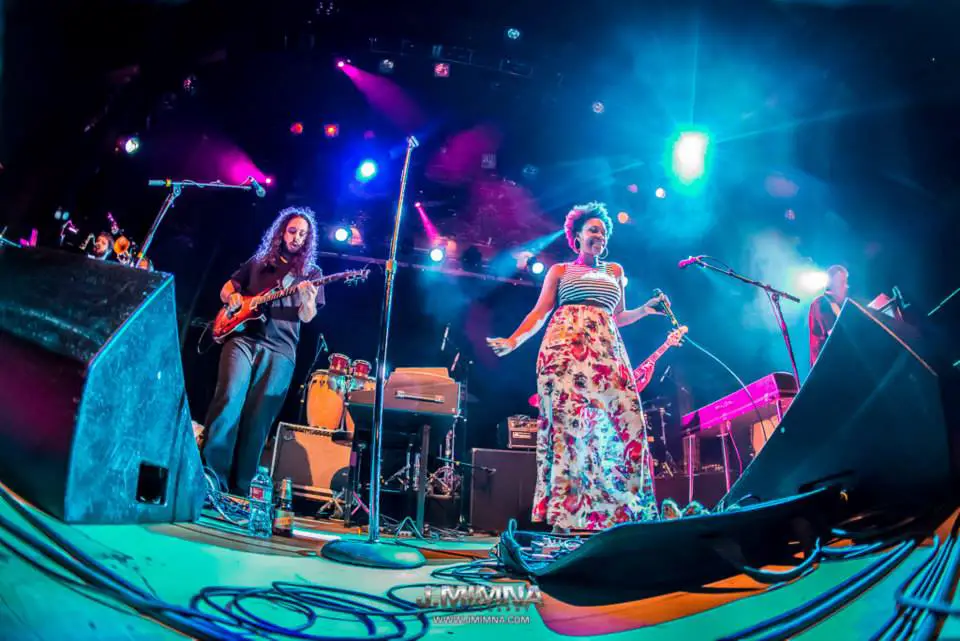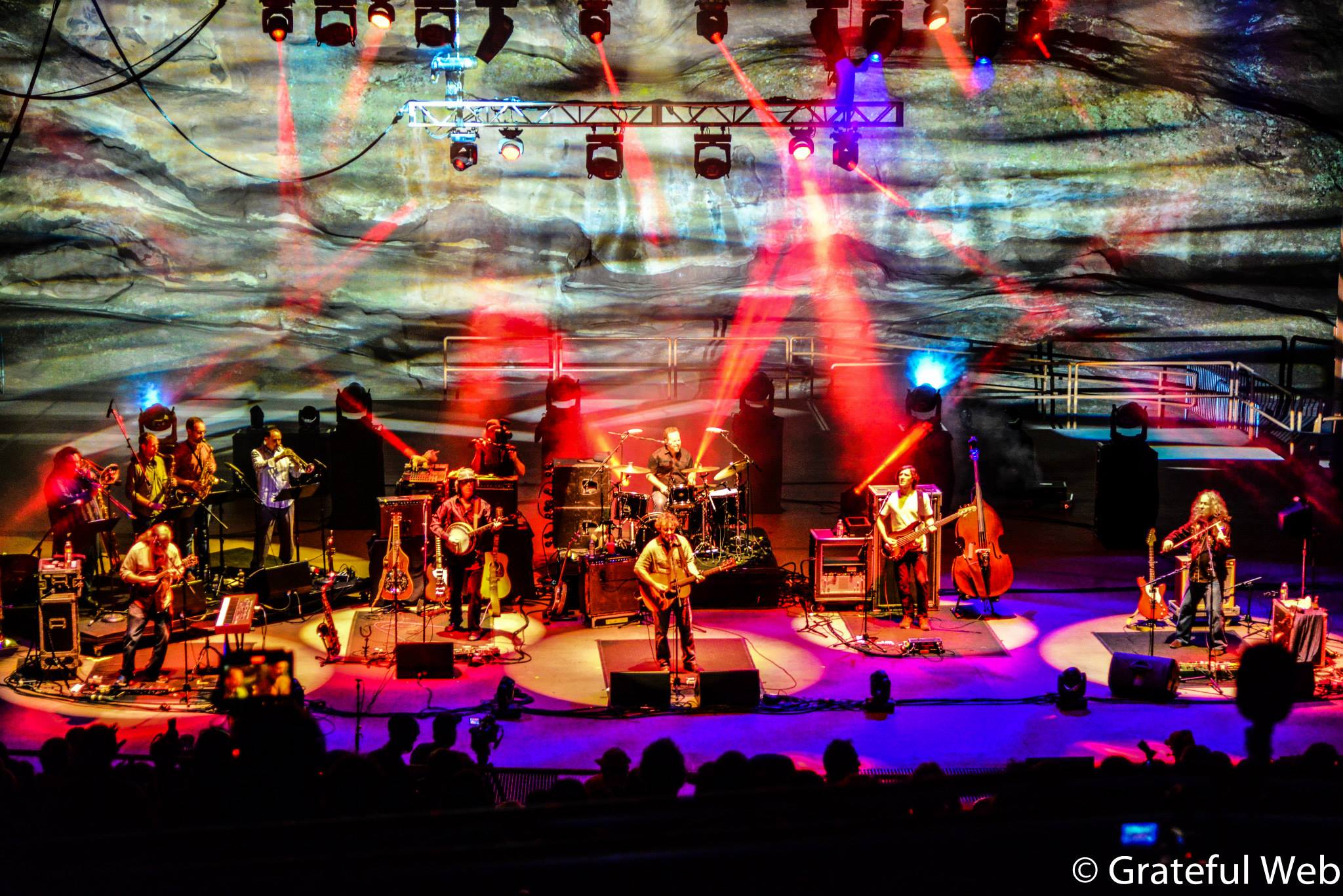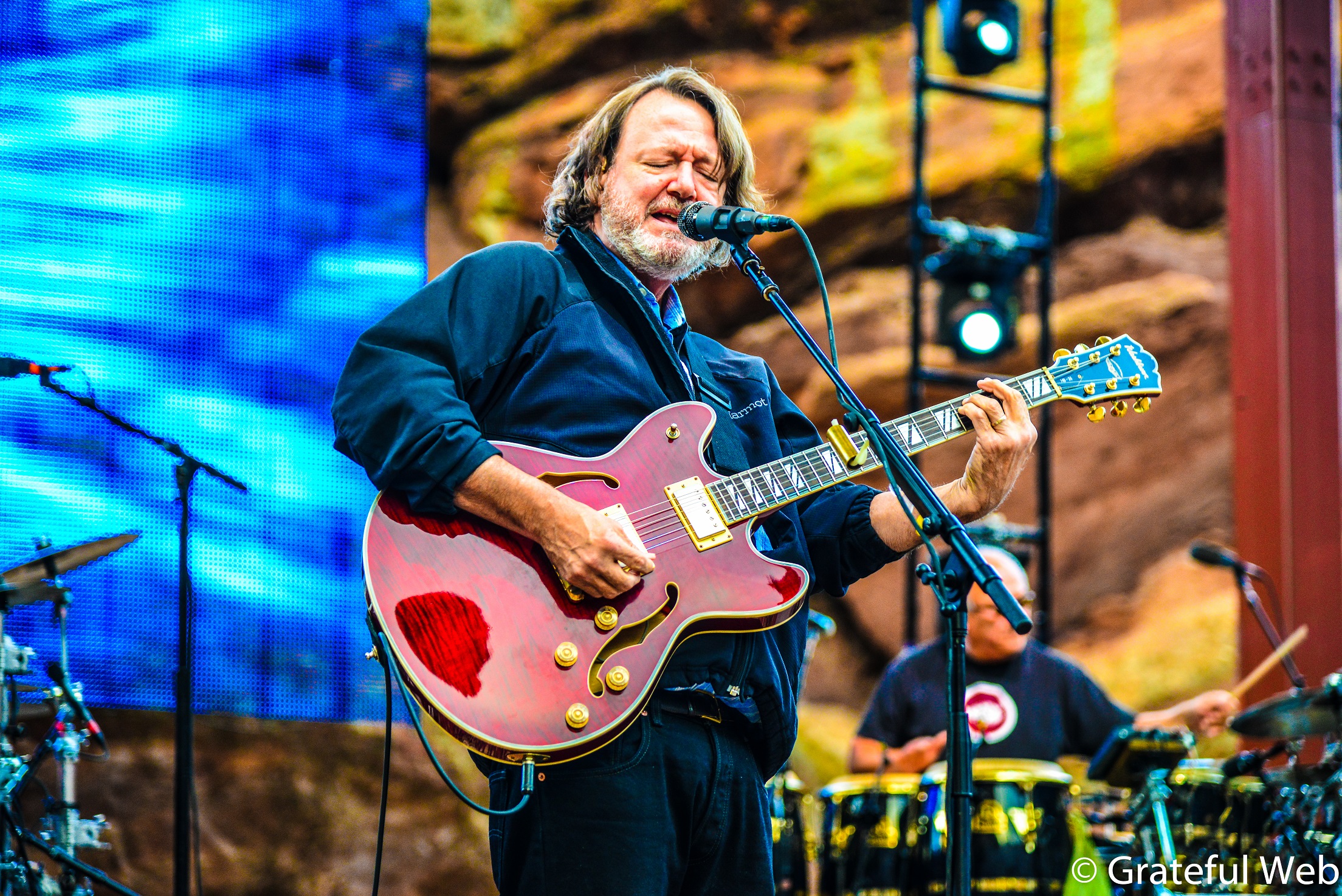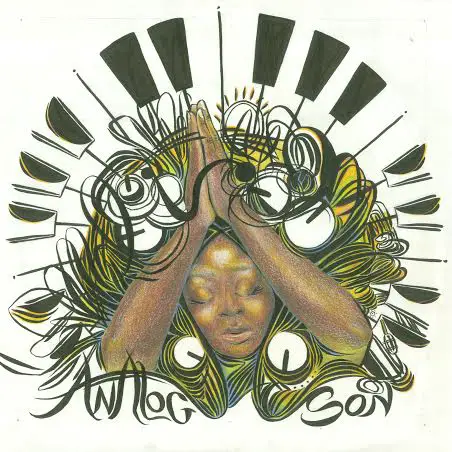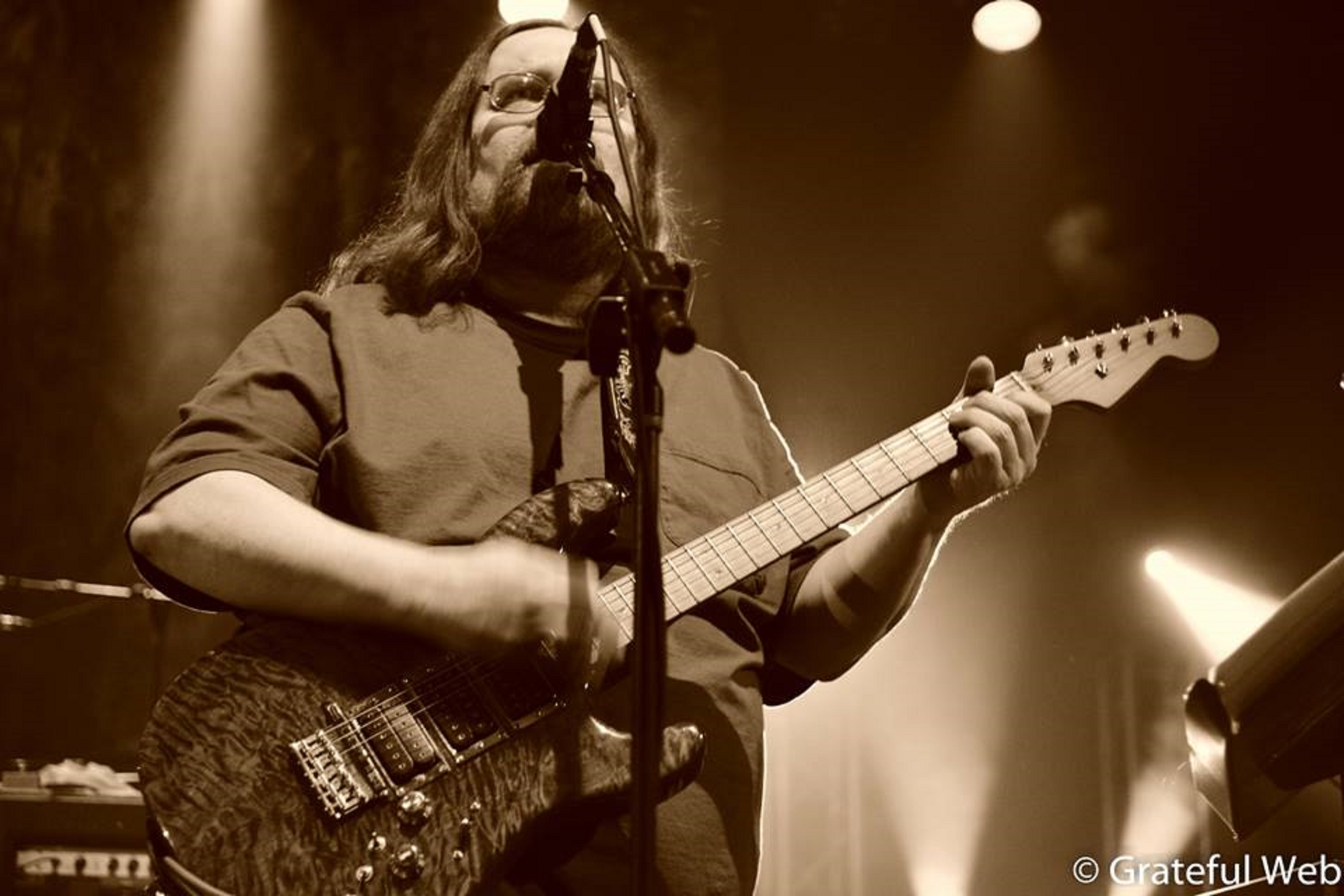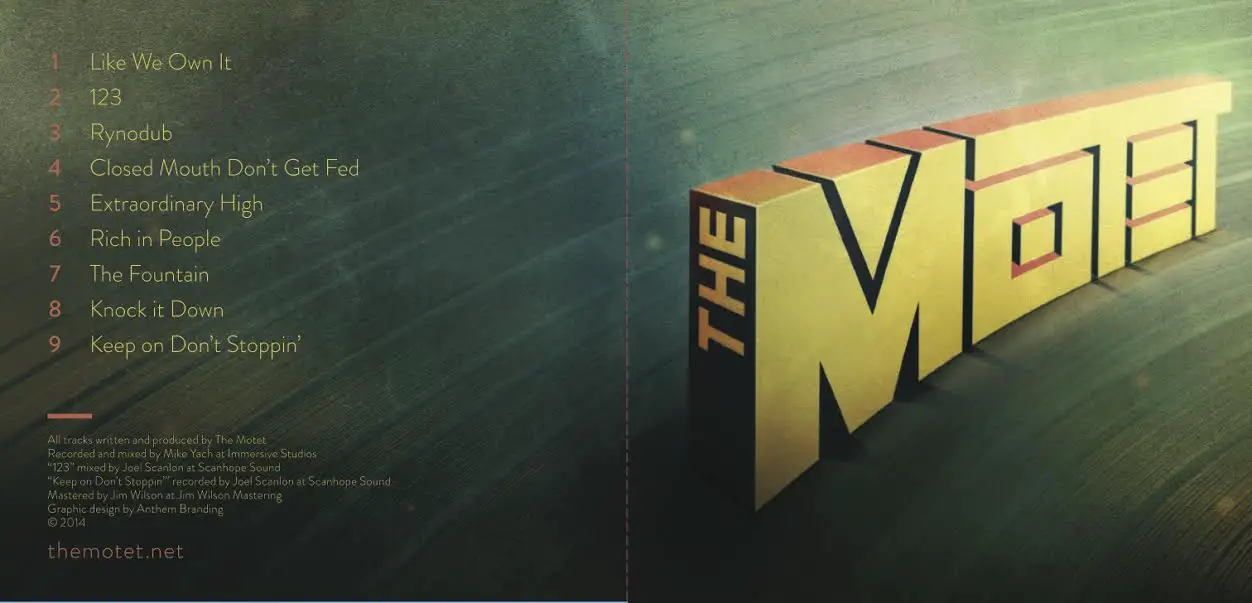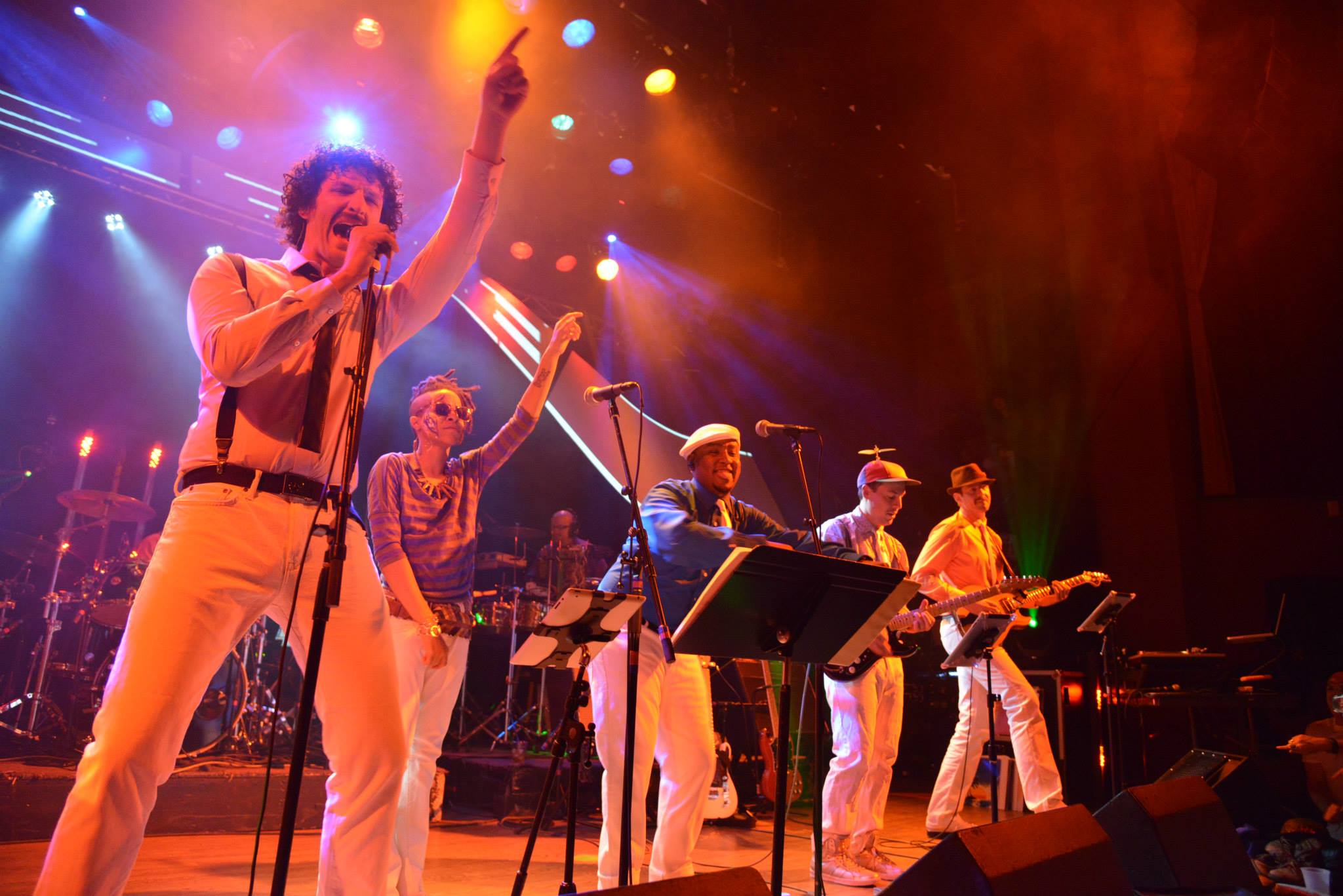Just a week ago, Carlos Burle captured the world record for largest wave surfed. Off the coast of Nazaré, Portugal, the Brazilian dropped into the face of an estimated 100-foot monster and, roughly 20 seconds later, entered the record books with the ride of his life. I am overwhelmed with joy when I listen to a band hit the groove so hard during a jam, it seems like the musicians are riding their own 100-foot wave. Picture Phish’s Ghost from Prague ‘98 or SCI’s Little Hands from Philly ’00. For seven or eight minutes, the men on stage become locked into a vortex of symphonic perfection and the resulting swells of euphoria wash over the crowd.
However, The Motet is different than any other band I’ve seen. The Boulder-based Afro-funk collection doesn’t surf big waves. Its grooves simply ARE the big waves, mounting with ferocious velocity and continuing, unabated, for the entire length of the show. On Halloween night at a sold-out Boulder Theater, those waves crested high above the crowd, which danced in delirium, and broke with heart-pumping speed and thunderous force. In their “wake”, at least one member of the crowd felt like he just experienced the ride of his life. And I wouldn’t be surprised if the other 999 felt the same way.
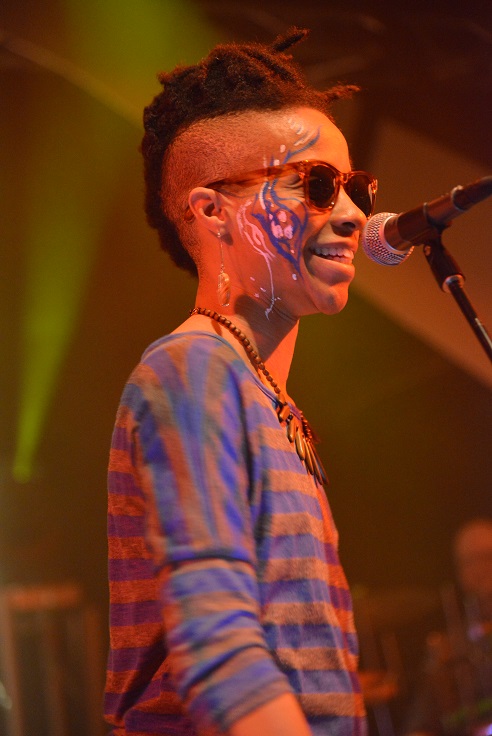
A Motet show is always an event, but there are two times each year in which the event morphs into an all-out bacchanal of bliss: April 20th and Halloween. In October, the group expands from a septet to duodectet and dedicates itself to arranging, practicing, and honing songs from another band, such as The Grateful Dead or Earth, Wind, and Fire. However, it took a different approach for Halloween ‘13. Drummer and bandleader Dave Watts, along with his cohorts, decided to perform a cross-section of funk, R&B, rock, and pop hits from a single calendar year. Hence the title of the show: “The Motet presents Mixtape 1980”. The setlist encompassed everything from Stevie Wonder and Switch to Bob Marley and Blondie. Watts said that the band spent “countless hours prepping the material individually” and 14 hours collectively rehearsing it. And those countless hours of dedication paid off from the get-go.
If there is a better song to open a show than Take Your Time (Do It Right), I have no idea what it is. The S.O.S. Band’s first hit introduced the world to vocal phenom Mary Davis and sold over two million copies. Guest vocalist Camille Armstrong initiated the Motet’s Halloween night with her own Sounds of Success, capturing the throaty and voluminous voice that propelled Davis to stardom. The only woman among eleven other men, Armstrong danced front and center the entire show and sung with a power that belied her diminutive stature. I was so taken aback by the nine-minute opener, words literally failed me. So all I wrote in my notebook was “Unf*^&ingbelievable beginning!” That’s critical shorthand for “I’m so stunned with euphoria right now, my brain is frozen.”
And then the opening bassline to Queen’s Another One Bites The Dust sent the crowd into a frenzy. Vocalist Jans Ingber took the first verse, but then handed the reins to Armstrong who elicited the dynamism of Freddy Mercury’s operatic rock voice.
At this juncture, before I delve into the heart of the show, it’s important to convey the visuals that enhanced it. Just like in past Halloweens, a thematic evocation was developed. With only a few exceptions, the musicians donned white pants, Converse Chuck Taylor kicks, colorful button-down shirts, and monochromatic ties. Ingber, bassist Garrett Sayers, keyboardist Joey Porter, and guest guitarist Dan Schwindt sported classic early ‘80s mustaches (think Magnum P.I., but just a little thinner). In addition to the band’s sartorial flair, lighting designer Jonathan Root created a projection mapping piece with custom visuals to match the band’s Mixtape 1980 theme. Mounted as a backdrop, the piece stretched the length of the stage and anchored a phenomenal light show. The commitment to visual detail has always worked to augment The Motet’s sonic experience and tonight was no different. While I personally don’t know what 1980 looked or felt like, the band instantiated enough visual cues to impart me with some sense of the time, at least from a fashion perspective.
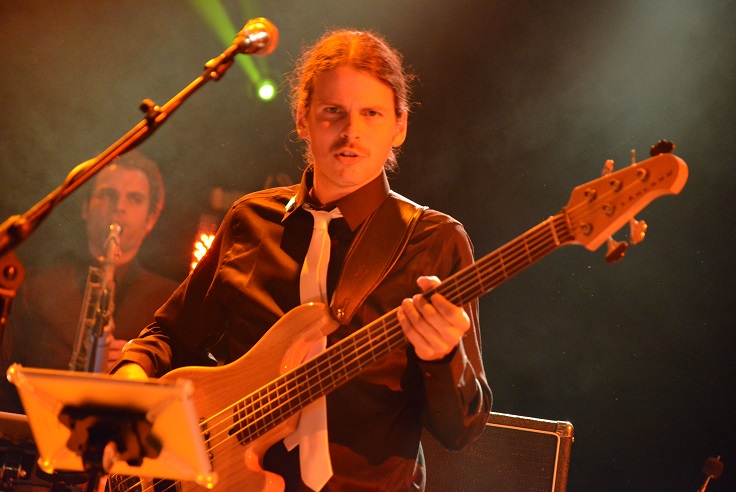
One of the highlights of the first set arrived courtesy of Led Zeppelin’s Fool in the Rain. Ingber channeled Robert Plant’s playfulness and then, three minutes into the piece, all heaven broke loose. A triumvirate of Watts, Ingber, and guest percussionist Christian Teele played a three-plus minute drum jam while others added ornamentation with hand-held percussives like cowbell and tambourine. While Fool in the Rain was technically released in 1979, the greatest rock drummer of all time, John Bonham, died in 1980. The jam was a fitting tribute. Watts and Teele established a smoking-hot Latin rhythm on their snare and timbales, respectively. Ingber took up perch next to Teele to join in on the congas. The percussion jam climaxed with Watts blasting both his crash and ride cymbals while Teele matched him, pace-for-pace, on the timbales. Finally, the fleet-handed drummers seamlessly segued, along with the entire band, into a very truncated version of Steely Dan’s down-tempo Babylon Sisters.
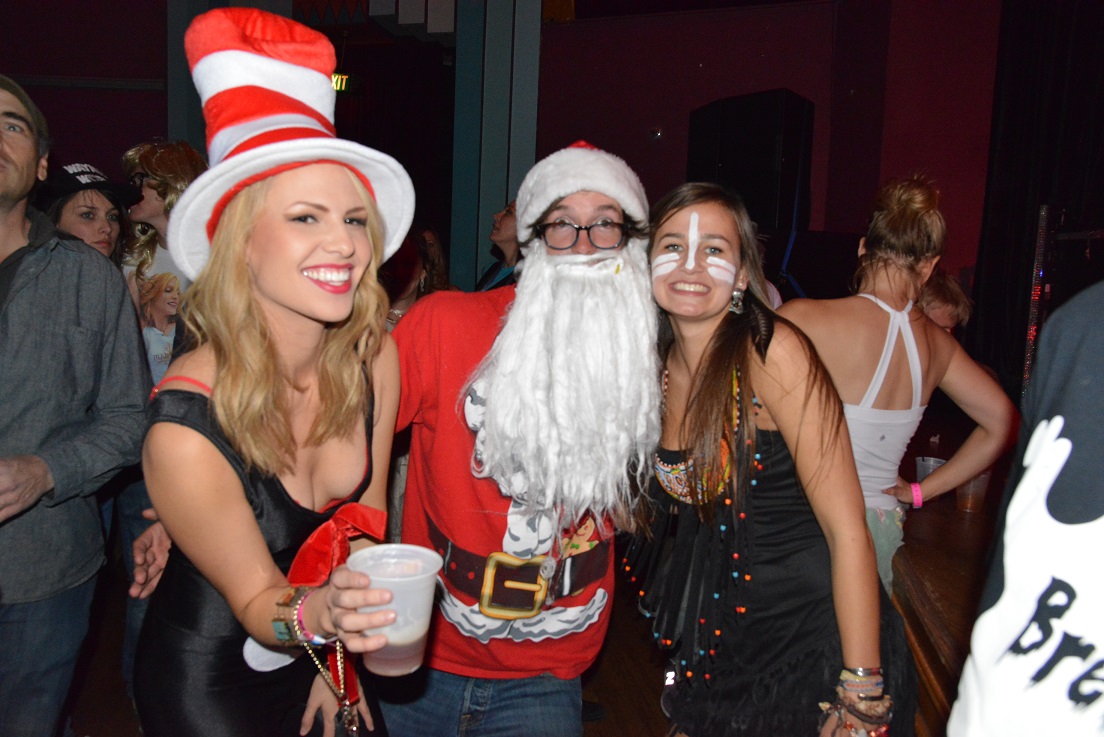
Walk Right Now marked the middle of the first set and, again, lit the Boulder Theater on fire. The Jacksons’ disco-pop classic showcased the protean talents of all three vocalists who had, thus far, proffered their best rock, R&B, and funk phrasings to great effect. LaDamion Massey imparted the trio with a soulful, almost spiritual, voice that harmonized with Ingber and Armstrong’s. After a few verses, Sayers nailed a libidinous bass solo bursting with roguish delight. I was dancing front row, directly in front of Sayers’s monitor, and my entire vicinity was enamored with his O-face as he ripped and popped through his solo.
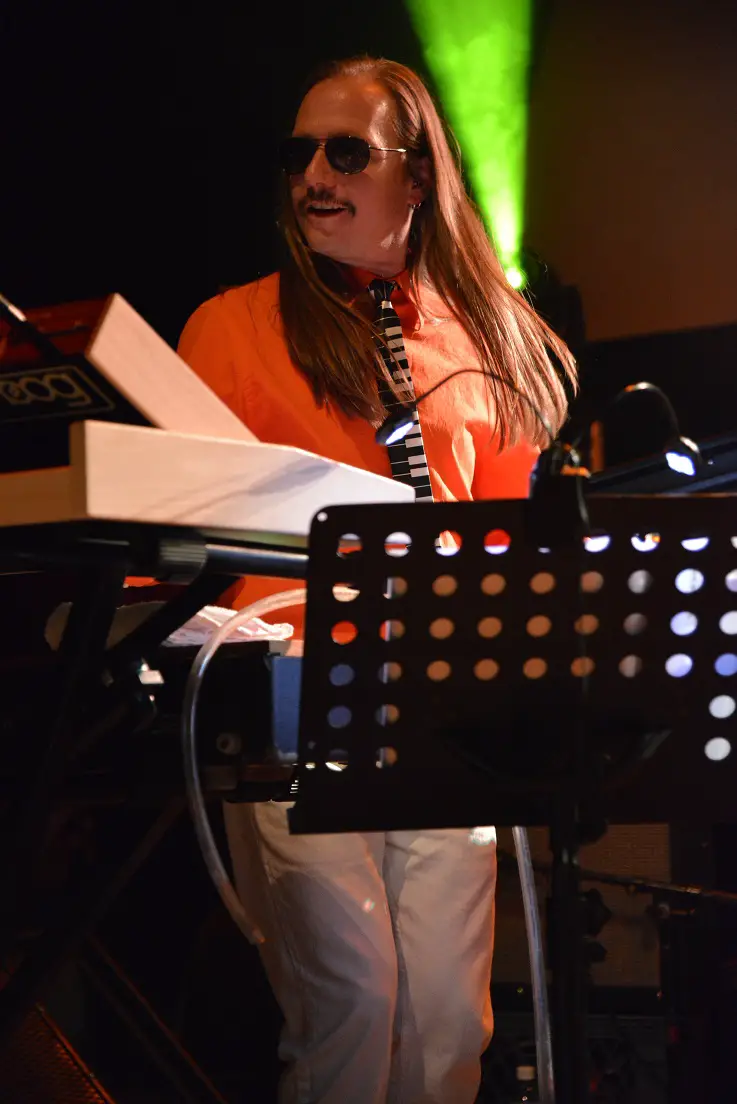
After slowing it down for Smokey Robinson’s Cruisin’, The Motet capped off a phenomenal first set with the first of two funk medleys. Con Funk Shun’s Got To Be Enough kicked off the five-song amalgam with a funk-laden horn arrangement. The Brothers Johnson’s Stomp gave Sayers another spotlight to brandish a style of bass that has invariably made him one of the focal points of the entire band. After a cover by The Whispers and The Fatback Band, The Motet closed out the first set with The Gap Band’s Burn Rubber On Me. The final song, and in fact the entire arrangement, elicited everything that I love about funk – the playful and carnal lyrics, the swells and undulation of the horn section, the tasty guitar licks, and the utterly-danceable beats that invariably build momentum to fever pitch.
At set-break, I was talking to a few people in my vicinity and we were all floored with the unbounded intensity of the first set and wondered whether the band could match it for the second. I could have gone home totally satiated after just 70 minutes of music if The Boulder Theater was mysteriously shut down for the night. The first set was that fulfilling.
To my amazement, The Motet eclipsed the first set with the greatest second set I’ve ever witnessed. They started off with a Cars > Whip It > Rapture triptych. The vocal trio danced The Robot to Gary Numan’s absurdist anthem, but then, once Sayers and Porter laid down the opening riff to Devo’s, well, equally absurdist anthem, the sell-out crowd was ready to roll. Porter extracted the ray-gun timbre of Devo’s keys from his Moog while Ingber sang lead. Cars and Whip It were both largely abbreviated, whereas Blondie’s Rapture was laid out in full-form glory. Guitarist Ryan Jalbert lifted the crowd with waves of sustain as he played a melodic and wailing solo, backed by the power chords of Schwindt’s guitar. As much as I loved my spot, couched between Ingber and Porter, with Sayers directly in front of me, the only drawback was that the guitar resonance from the other side of the stage was often muzzled by the keys and bass. I didn’t get to hear as much of Jalbert and Schwindt as I would’ve liked, but it’s a sacrifice one has to make in order to dance front row instead of on the second tier, about 20 feet back.
The heart of the second set sprouted from Stevie Wonder’s funk-reggae odyssey Master Blaster. Trumpeter Gabe Mervine took an extended solo in the middle of the piece. His progressions and phrasing were divine. By the end of the solo, I was floating on air and, judging by the amount of people dancing with their eyes closed, I imagine a large contingent of my vicinity joined me.
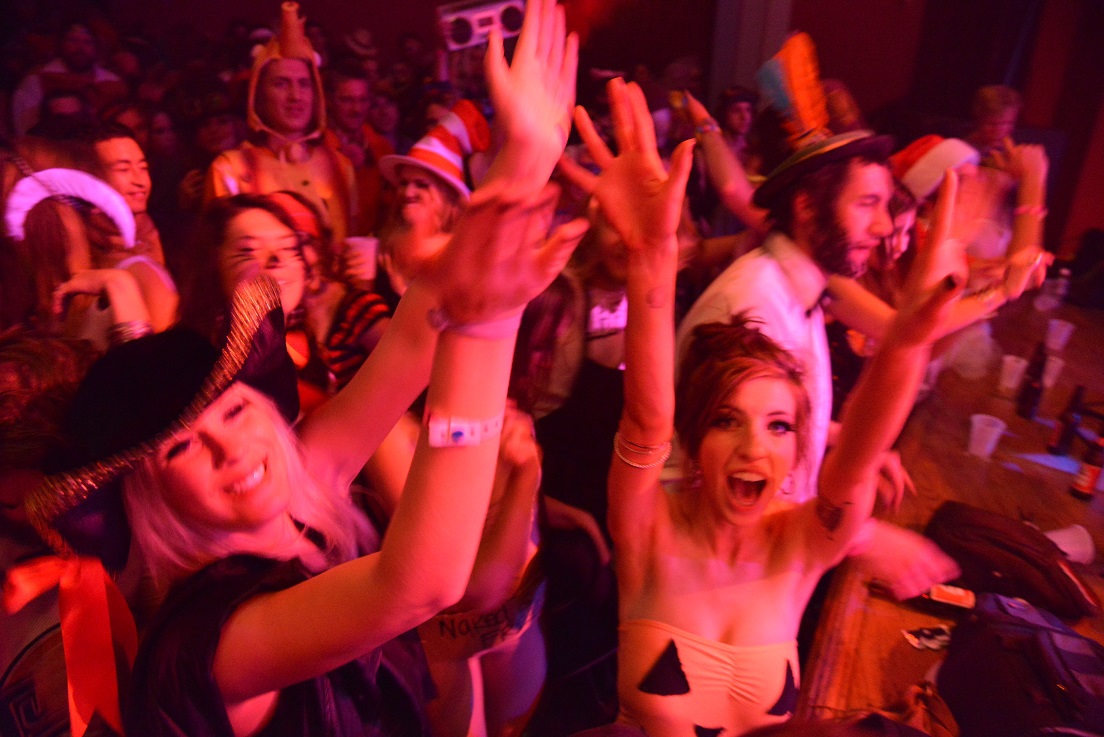
One of the best parts of The Motet is its ability to change course without any adjustment period. The band went from Wonder to The Police’s When The World Is Running Down without missing a beat and this was easily one of the highlights of the entire night. Additionally, Porter played the finest solo of the evening, which is saying a helluva lot considering the competition he had from the likes of Mervine, Sayers, Watts, and Teele. Vamping on his Roland, Porter helped to stretch out a sub four-minute song into a nine-minute colossus. I don’t have the lexicon to characterize what Porter did on the keys. I just hope the band releases this show on The Archive so those who weren’t there can at least get a taste of the hypnotic web woven by Porter and the eleven other musicians during this song.
It’s truly difficult to do justice to Bob Marley’s Could You Be Loved, but The Motet swung for the fences and connected for another huge moment in the second set. Armstrong took lead vocals and simply nailed the prosody of Marley’s Jamaican inflection, while never forgetting about the visceral emotion anchoring the song. The piece was enhanced by her lissome dancing, along with Ingber’s R&B/down-tempo disco moves. About four minutes in, a jam ensued which was at once focused, but also spacey, with heavy distortion and reverb coming from the guitars. Sayers kept the jam tight with a bouncing bassline until everyone returned to the bridge and refrain to finish the song.
Late in the Evening acted as a second-set companion piece to Fool in the Rain. Both were immediately recognizable by the crowd and provided a launching pad for an incredible drum “solo”. After the famous verse involving a J and “owning” on stage, tenor saxophonist Matt Pitts, guest baritone saxophonist Serafin Sanchez, and Mervine truly did blow the room away with their Latin vamping. Soon after, a similar scene to the first set ensued, with Ingber returning to the congas as the same triumvirate of percussionists serenaded the crowd with yet another brilliant percussion piece. Sayers assisted on cowbell while Armstrong played the tambourine. I can’t say enough about Watts and Teele’s chemistry, syncopation, and energy as they got the crowd even more riled up before the entire band joined in to reprise Late In The Evening.
The Motet entered into their second funk medley of the evening which was thematically tied to getting down on the dance floor. As the clock approached 1a.m., Tom Browne’s Thighs High (Grip Your Hips and Move) kicked the medley off before giving way to George Benson’s Give Me The Night. The Dazz Band's Shake It Up then segued into Zapp and Roger’s More Bounce To The Ounce. In the last song of the medley, Porter finally had the opportunity to showcase his talk box skills, which assisted the band in creating an exceptionally funky rendition to live up to the original.
As a Deadhead, I liked The Motet’s decision to play a ballad for their penultimate piece and follow it with a hair-raising set closer. The Manhattans’ Shining Star accorded the trio of vocalists one final chance to wow the crowd with tight harmonies and soulful refrains. Before tonight, I had never seen Armstrong sing either solo or in collaboration with other bands. But after listening to her performance in pieces like Shining Star and Could You Be Loved, I will certainly be looking out for her name on the marquee.
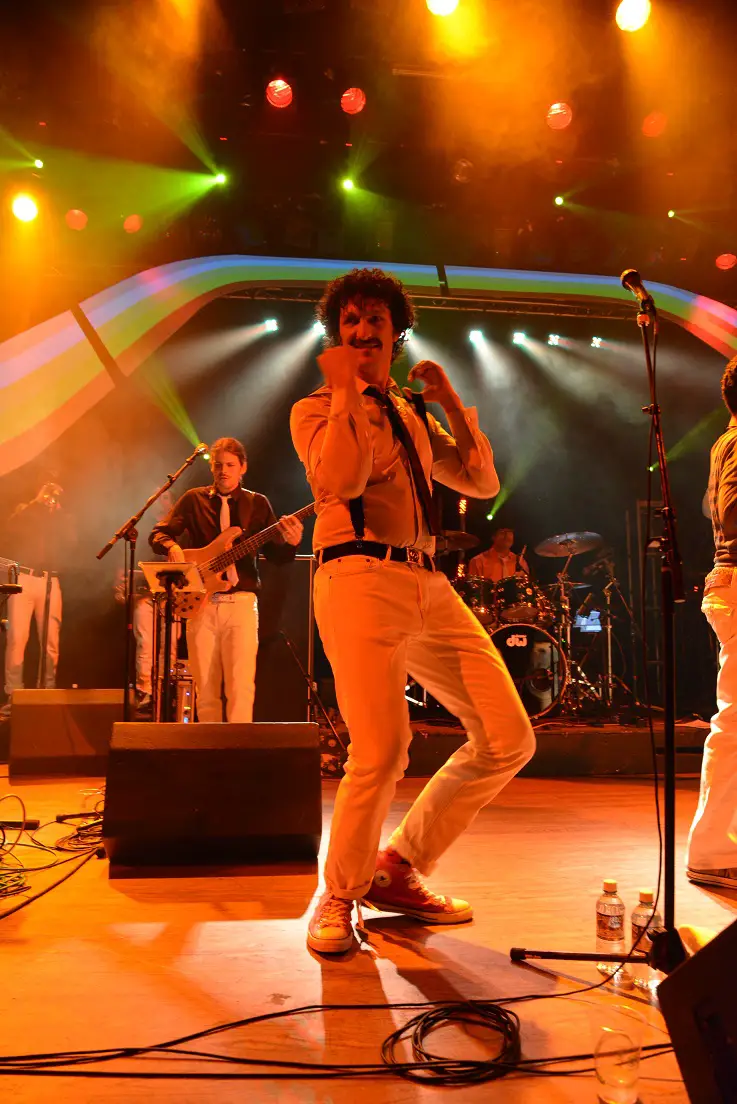
Power to Dance was the absolute PERFECT bookend to the first song of the night: Take Your Time (Do It Right). Both are life-affirming pieces that make it all but impossible to stand still. Of the copious highlights, The Motet’s Switch cover proved to be the crème de la crème. Despite the energy and calories burned during a night of incomparable bliss, the band ensured that Power to Dance kept its titular promise. This is another piece where I can’t even fathom describing the nirvana that was collectively achieved by the Boulder Theater crowd. But beyond staking claim to the ineffable, what I can say is this; I witnessed two girls who were crying near the end of the final refrain, make-up and face-paint smudging beneath their eyes. When music engenders a personal catharsis, there’s no way to reject its potency. Visceral gratitude comes in many permutations: crying, dancing on an empty tank, the feeling of floating, smiling until one’s jaw locks into place, sensing a cascade of shivers racing down one’s back, and so many more iterations. I imagine most everyone at The Boulder Theater experienced some form of involuntary gratitude for the gift that was bestowed upon them. My jaw was aching and I certainly never left the ground even though I sensed I was weightless.
After thanking their fans, The Motet returned for a four-song encore, which included two Kool and The Gang classics: Celebration and Ladies Night. By then, everything was just icing on the cake and I was beyond satiated. Which brings me to November 1st. An old roommate of mine called me from a Philadelphia airport Friday afternoon. Mark flew from Boulder to Philly to see Phish’s Halloween show in Atlantic City. When we talked, he reported to me that it was a good show, but he was disappointed with Phish’s costume: a future album featuring all Phish original debuts. Earlier in the month, I tried to convince Mark to just stay in Boulder, save $600, and go to The Motet show. My entreaties fell on deaf ears as he was committed to seeing his favorite band. When I heard the letdown in his voice, I didn’t have the heart to tell him that I was still recovering from the greatest show I’d ever seen.
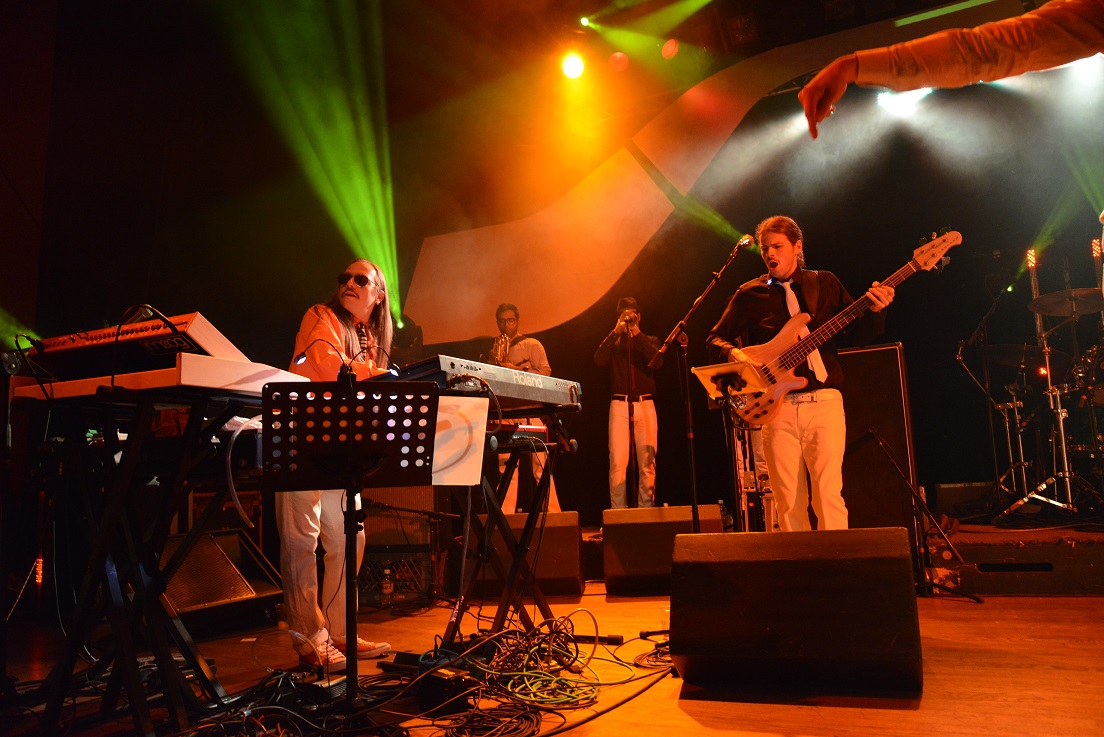
He might not have believed me either because it would have been the fourth occasion in just two years in which I would have exclaimed: “Best show ever!” The other three were, likewise, Motet masterpieces: 10/31/11, 4/20/12, and 4/20/13. At this point, Mark likely would have just dismissed me for being a perpetual prisoner of the moment. But he would be wrong. For over a decade, prior to Halloween 2011, only one show has occupied my Greatest Of All Time slot: Phish at Big Cypress, 12/31/99. But there’s just no comparison anymore.
Motet’s “Mixtape 1980” Halloween costume was an aural awakening. I have never danced as hard, loved music as much, or experienced, with the utmost force, the waves of sublime power wash over my soul.
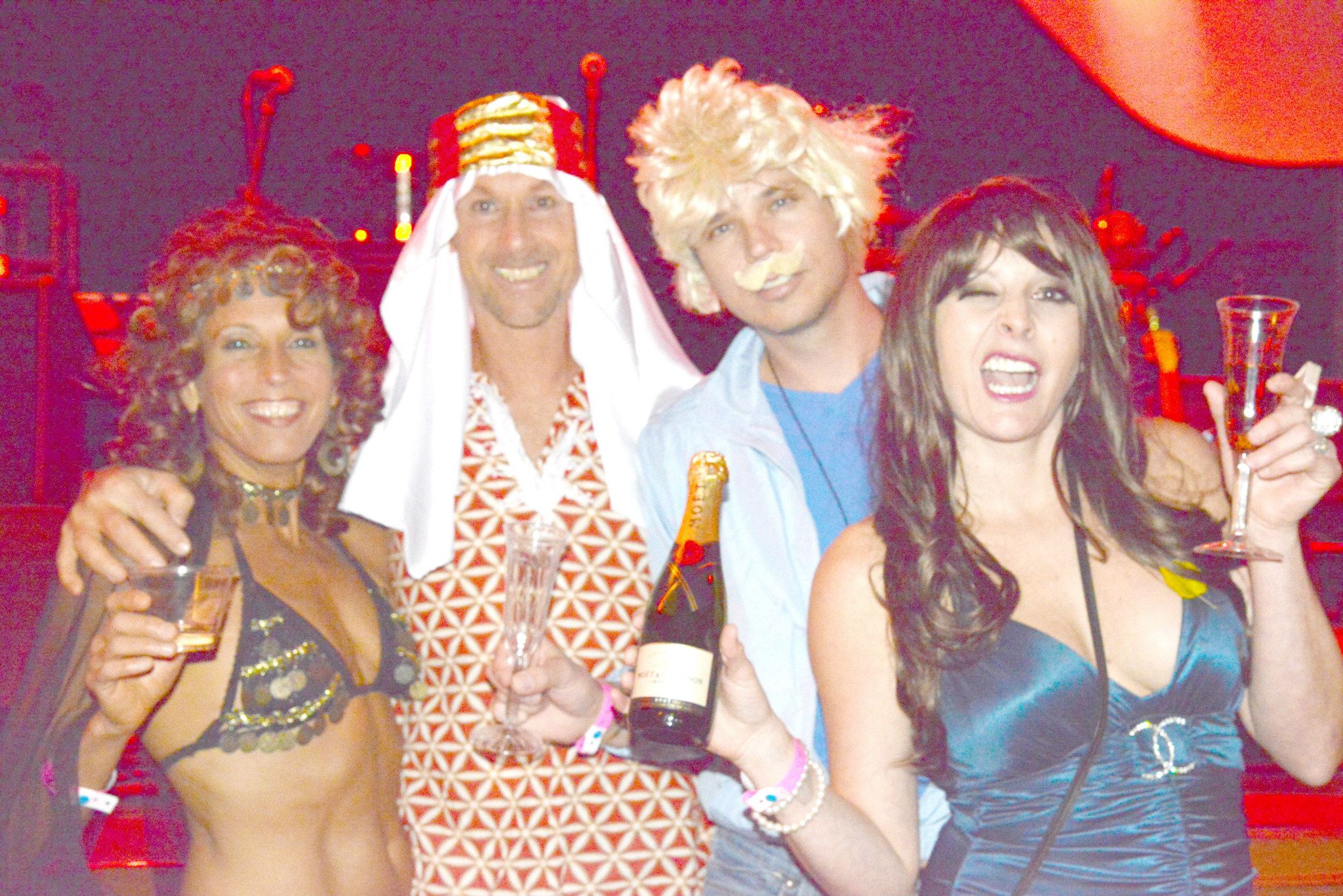
Check out more photos from Halloween at the Boulder Theater.





